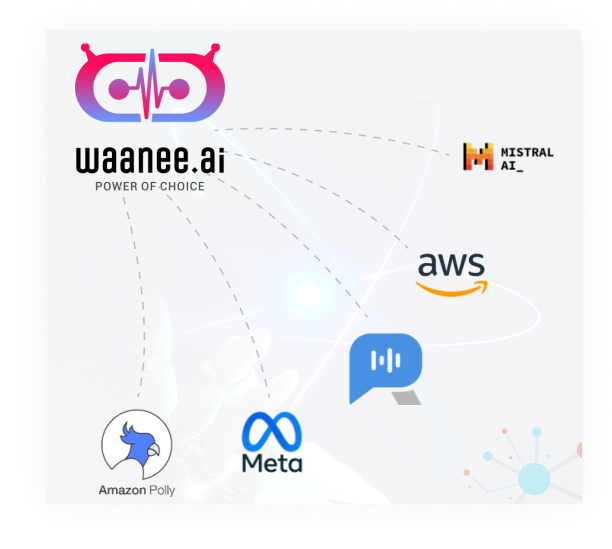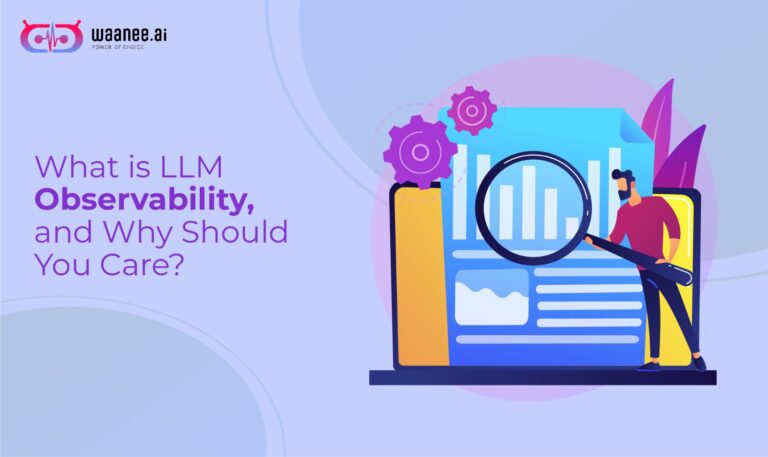
-
Waanee AI Labs
View All »

Get The Latest
Detecting Fraud Patterns Through Voice Conversations in Real Time
Read More »Will AI Replace Call Center Agents? The Truth About Virtual Assistants and Human Collaboration
Read More »Transforming Contact Centers with Waanee AI's Agentic Framework
Read More » - Blog
What is LLM Observability, and Why Should You Care?
Posted by Vishal Vanwari, on 24 Aug, 2024 08:16 AM

When integrating large language models into your applications, have you ever wondered how these models are behaving in real-world scenarios?
Are you curious about how users interact with them and whether they are delivering the desired outcomes?
Well, LLM observability is the key to answering these questions. It goes beyond simple monitoring by allowing developers and businesses to gain deep insights into model behavior, identify issues in real-time, and optimize performance.
But what exactly does observability entail for these large language models, and why is it essential for your AI-powered solutions?
Let us understand LLM Observability:
Key Components: LLM observability consists of several core components that provide a comprehensive view of the model’s operation.
The first is logging and tracing, which involves capturing detailed logs of user interactions with the model, tracking inputs, outputs, and any intermediate steps. This helps in identifying patterns, any bottlenecks, and anomalies.
The second component is metrics and monitoring, where you measure key performance indicators (KPIs) such as response times, accuracy, and user satisfaction. Monitoring these metrics allows you to assess the overall health and efficiency of your LLM deployment, ensuring it meets performance benchmarks.
The last one is, alerting systems. It is crucial for flagging critical issues like unexpected model behavior or performance degradation, enabling timely interventions.
Implementing LLM Observability
What could be the Best Practices for implementing it?
To effectively implement LLM observability, it’s vital to follow best practices that ensure your system is both robust and adaptive.
Start by setting up comprehensive logging and tracing mechanisms that capture all interactions. Use tools that can aggregate and visualize data, providing insights into how the model performs under different conditions. It helps you to understand bottlenecks and root cause of issues, such as which chunks are responsible for any specific response. Which is the source of discrepancy. It gives you an idea that which part of the whole cycle from query to knowledge search to response is taking more time.
With all these, it is very important to establish a feedback loop where data from observability informs model retraining and fine-tuning, ensuring continuous improvement.
By prioritizing LLM observability, you can enhance the reliability, transparency, and accountability of your AI models, ultimately leading to better user experiences and business outcomes.
READ ALSO...
Detecting Fraud Patterns Through Voice Conversations in Real Time
03 Jul, 2025 11:09 AM
Will AI Replace Call Center Agents? The Truth About Virtual Assistants and Human Collaboration
19 May, 2025 11:30 AM
Transforming Contact Centers with Waanee AI's Agentic Framework
25 Feb, 2025 01:52 PM
Revolutionize CX
with AI power
Delivers personalized interactions and immediate, data-driven solutions powered by AI, transforming customer experiences.

We use cookies!
We use cookies to ensure that we give you the best experience on our website.
By continuing to use this site, you accept our use of cookies. Learn more
 Recruit Industries Agents
Recruit Industries Agents Build Your Agent
Build Your Agent Improve Self Service
Improve Self Service Employee Experience
Employee Experience Sales and Cross Sales
Sales and Cross Sales Calling Script
Calling Script Integration & APIs
Integration & APIs Auto Summarization
Auto Summarization Conversational Intelligence
Conversational Intelligence Sentiment Analytics
Sentiment Analytics Auto QA
Auto QA Net Promoter Score
Net Promoter Score